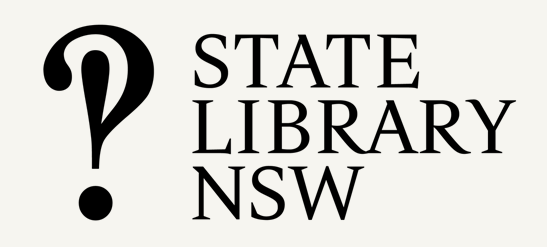Published December 2010; revised May 2023
Background
Members of the National and State Libraries of Australasia (NSLA) have a legislative responsibility to develop, maintain and provide access to Australia and New Zealand’s cultural documentary heritage. These collections are a significant national asset that support learning and education, creativity, innovation and knowledge exchange for all Australians and New Zealanders.
NSLA supports a system of copyright in which the rights of creators and the public interest are balanced. As NSLA libraries do not usually own copyright in collection materials, adherence to copyright is a fundamental consideration that influences operational activities, and may at times restricts our ability to provide access. While NSLA welcomes the recent standardisation of the copyright term for orphan works in Australia, [1] the challenge of acquiring permission remains a major barrier restricting the ability to fulfil our obligations to provide opportunities for use.
Orphan works are in-copyright works where the creator cannot be identified and/or located, which makes obtaining permission to use impossible. Orphan works cover all formats (analogue and digital) and, although generally thought of as older works, can include any work lacking sufficient information about the creator, including those with anonymous or pseudonymous authors. Abandoned works, where the creator is known but non-responsive, contribute to the permission problem, as does the fact that copyright treats personal items such as diaries, letters and photographs equally with commercial works.
Orphan works impact on collecting institutions throughout the world. In 2018, the British Library estimated that 40 per cent of its collections are orphans. In Australia, a survey of members of the Australian Digital Alliance and Australian Libraries and Archives Copyright Coalition indicated that library collections comprise up to 70 per cent unpublished orphan works. Libraries attempting to address the issue face a number of complications, and the resourcing costs to provide public access to orphan works represent a substantial call on scarce resources.[2]
Internationally, several governments have applied legislative interventions to facilitate access and use of orphan works; these solutions have at best, delivered partial results.[3] Lacking a specific exception or licensing solution for orphan works, Australia’s legislation provides some, limited, options. These include the fair dealing exception, the government statutory licence (s183) and the special case exception (s200AB). The special case exception, introduced in 2006 to allow socially beneficial uses of copyright works by institutions, has become the default exception for institutions providing public access to orphan works. New Zealand’s Copyright Act 1994 does not have similar exceptions and therefore does not currently have a legislative mechanism for use of orphan works. In Australia, legal uncertainty arising from interpreting the requirements of the three-step test has hampered the adoption of this exception by collecting institutions.[4] This has led some Australian institutions to preference a risk-management approach, sometimes in tandem with s200AB, based on a reasonably diligent search for orphan works. A further difficulty with the special case exception is that it does not extend to permitting downstream use by the public, leaving institutions with the task of explaining this lack of parity.
NSLA supports the introduction of legislative reforms to modernise the Australian Copyright Act 1968 and to address the issue of orphan works so that both institutions and individuals have the right to freely and fairly use orphan works following a reasonably diligent search for the rights holder.
NSLA further advocates the adoption of an exception or limited liability scheme for both institutions and individuals provided a reasonably diligent search has been undertaken, and the use is in good faith.
Principles
NSLA anticipates and welcomes ongoing copyright reform to improve access to orphan works, and in the interim supports the following principles to facilitate use of orphan works.[5] These principles are applicable to institutions and individuals seeking to use orphan works.
- A reasonably diligent search to find and locate the copyright owner will be conducted before the work is used.
- Any use of an orphan work will be non-exclusive and will seek to provide clear and adequate attribution of the rights owner, if known.
- If the copyright owner appears at a later date, restitutions may be provided in appropriate circumstances, however, these will take into account the creative efforts and investment made in good faith by the user of the work.
- Use of orphan works will respect any protocols relating to Indigenous materials.
Standards for a reasonably diligent search
NSLA advocates undertaking a reasonably diligent search for the rights holder before using an orphan work. In keeping with international practice, a reasonably diligent search may be scalable or modified as appropriate to the context and intended use of the material. Although this will not change the copyright protection of a work, NSLA believes that establishing parameters for a reasonably diligent search provides a practical solution for libraries to use these works in conjunction with legislative exceptions and risk management principles. This may also provide opportunities, through public exposure, to reunite rights holders with their works.
In practice, a reasonable search will involve a continuum of effort ranging from minimal through to an extensive or extraordinary search. On this continuum, a greater level of resources and professional expertise will be required to locate the copyright holder of recent and/or works created by professionals as these searches have a higher likelihood of success. Prominent use of a work or a use that would be difficult to rescind or take down will also require greater search efforts.
Quantifying the search effort will be dependent, but not limited to, criteria such as:
- the amount of information on or about the work that is initially available
- the age and uniqueness of the work
- the prominence and extent of the use of the work
- whether the work is of a commercial nature.
Sampling may be used in certain circumstances (such as the digitisation of non-commercial works like diaries, letters, etc.) to meet the criteria of a reasonable search.
As far as practicable, libraries will identify the status of an orphan work in collection management and/or other relevant databases, and search records archived in provenance files. All efforts to reduce the number of future orphan works will be undertaken: this includes establishing and recording details of rights holders at the time of acquisition and accessioning copyright material into the collection. NSLA encourages copyright owners to come forward, and will as far as practicable, work to ensure that rights holders’ details are current.
Position statement: Reasonably diligent search for orphan works
Related: Procedural guidelines for reasonably diligent search for orphan works
[1] The Copyright (Amendment Disabilities and Other Measures) Act 2017 introduced new, clearer term provisions for copyright works where the creator is unknown (i.e. orphan works), which means that it is now easier to calculate. The basic rules for duration of orphan works are now 70 years after the work was made public, or if not made public within 50 years, 70 years after it was created.
[2] See the 2018 British study, Thomas Ash, Where are all the orphans? How effective is current legislation in enabling cultural heritage institutions to make orphan works available online. City University of London, 2018.
[3] For example, the United Kingdom and Canada have established licensing schemes, while the European Union introduced a Directive for member states to introduce an exception for prescribed uses.
[4] The three-step test requires that the use must not conflict with the normal exploitation of the work by the rights owner, will not unreasonably prejudice the rights owner, and be a special case.
[5] These principles accord with the position broadly adopted and promoted by peak bodies and cultural institutions, including the International Federation of Library Associations, the Australian Library and Information Association, and Australian National Film and Sound Archive.









